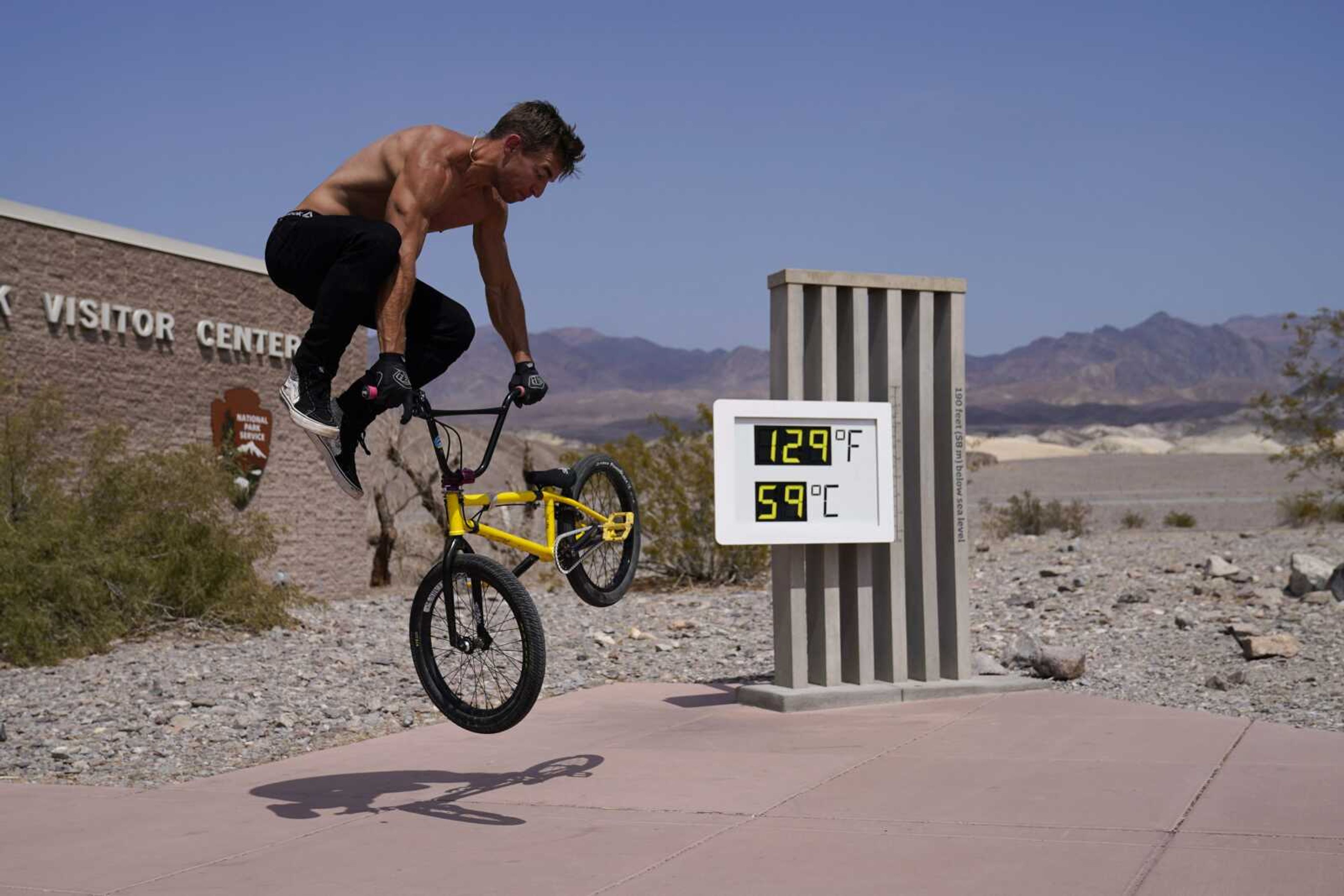Death Valley's brutal 130 degrees may be record if it is verified
California sizzled to a triple-digit temperature so hot that meteorologists need to verify it as a planet-wide high mark. Death Valley recorded a scorching 130 degrees (54.4 degrees Celsius) Sunday, which if the sensors and other conditions check out, would be the hottest Earth has been in more than 89 years and the third-warmest ever measured...
California sizzled to a triple-digit temperature so hot that meteorologists need to verify it as a planet-wide high mark.
Death Valley recorded a scorching 130 degrees (54.4 degrees Celsius) Sunday, which if the sensors and other conditions check out, would be the hottest Earth has been in more than 89 years and the third-warmest ever measured.
The temperature, measured at the aptly-named Furnace Creek during a blistering heat wave, would be the hottest temperature recorded on Earth in August, said Arizona State University professor Randy Cerveny, who coordinates the World Meteorological Organization's extreme temperature team, which is already investigating the mark.
That 130 is only below the disputed all-time record of 134 degrees (56.67 Celsius) at nearly the same spot in 1913 and a 131-degree mark (55 degrees) in Tunisia in 1931, but both were in July, traditionally the planet's hottest month.
The relentlessly hot weather conditions at the spot support such an extreme reading, so much of the verification effort will be looking at how the measurement was taken and the sensor itself, Cerveny said. Sunday's temperature would beat marks of 129 (53.9 Celsius) recorded three times in recent years, he said. The monitor is an official one that follows world guidelines, but still needs to be examined in a process that takes months, he said.
"We are having more extremes than we had in the past," Cerveny said.
The world is "creeping up on (the 134-degree record) year after year. That is something that cannot be denied," Cerveny said Monday. "These extremes tell us a lot about what will happen in the future."
The western heat wave is due to a "massive dome of high pressure" that keeps roasting the West and the normal Southwest monsoon that would provide rain and relief is missing, so there has been no cooling, Cerveny said. Phoenix has gone weeks with temperatures not dipping below 90, even at night or early in the morning, he said.
The 130-mark capped a week and an ongoing summer of "very strange" weather, said Deke Arndt, director of the National Weather Service's Center for Weather and Climate and former chairman of the U.S. national weather extremes committee.
On Saturday, a fire tornado formed during a wildfire near Chilcoot, California, worsened by the western heat wave. The fire was "burning so incredibly intense, so there is just so much heat going into it" that air rose in a swirl just like what happens in some thunderstorms, said Dawn Johnson, senior meteorologist at the National Weather Service office in Reno, Nevada. "It almost looks like a bomb went off."
And days before that, a violent straight-wind derecho devastated parts of Iowa, Illinois and Indiana, killing four people and causing billions of dollars in damages. Also, the Atlantic keeps setting records for earliest hurricanes, with 11 forming before mid August and the beginning of peak season.
"These kinds of things are certainly consistent with everybody's expectation for what we expect to see more often" with man-made global warming, said Jennifer Francis, a senior scientist at the Woodwell Climate Research Center, formerly Woods Hole Research Center, in Cape Cod, Massachusetts.
Death Valley's National Park's 130-degree temperature was recorded at 3:41 p.m. at Furnace Creek near the park's visitor center. It's the same area that holds the world record for highest temperature ever recorded -- 134 degrees (56.67 Celsius) -- set on July 10, 1913, although that record remains in dispute. Arndt said meteorologists have made good cases for and against the record's legitimacy.
With this new temperature, Arndt said his former committee might look yet again at the 1913 record, which Cerveny said is based on peer reviewed research and is official.
While individual one-day records shouldn't be used to make a case for or against climate change, scientists say the overall context of more extreme weather and higher temperature shows global warming at work.
Death Valley, an austere landscape in the desert of southeastern California, includes Badwater Basin, which at 282 feet below sea level is the lowest point in North America. Nearby mountains also help trap heat there and the dry land helps temperatures get hotter, Cerveny said.
Summer heat is so routinely extreme that tourists are warned to drink at least a gallon of water each day, carry additional water in their cars, stay close to their vehicles and watch themselves and others for dizziness, nausea and other symptoms of potentially deadly heat illness.
"I've been in Death Valley for 122 (50 Celsius)," Cerveny said. "It's just like be enveloped in a thick hot blanket of air. There is just no relief to it."
Connect with the Southeast Missourian Newsroom:
For corrections to this story or other insights for the editor, click here. To submit a letter to the editor, click here. To learn about the Southeast Missourian’s AI Policy, click here.










